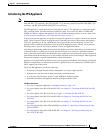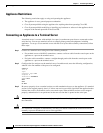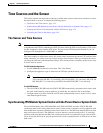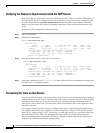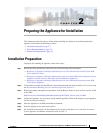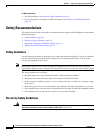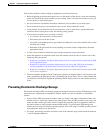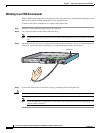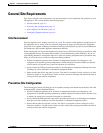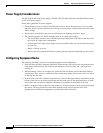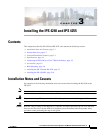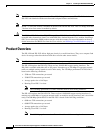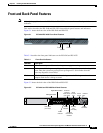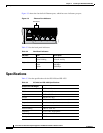
2-3
Cisco Intrusion Prevention System Appliance and Module Installation Guide for IPS 7.1
OL-24002-01
Chapter 2 Preparing the Appliance for Installation
Safety Recommendations
Follow these guidelines when working on equipment powered by electricity:
•
Before beginning procedures that require access to the interior of the chassis, locate the emergency
power-off switch for the room in which you are working. Then, if an electrical accident occurs, you
can act quickly to turn off the power.
•
Do not work alone if potentially hazardous conditions exist anywhere in your work space.
•
Never assume that power is disconnected from a circuit; always check the circuit.
•
Look carefully for possible hazards in your work area, such as moist floors, ungrounded power
extension cables, frayed power cords, and missing safety grounds.
•
If an electrical accident occurs, proceed as follows:
–
Use caution; do not become a victim yourself.
–
Disconnect power from the system.
–
If possible, send another person to get medical aid. Otherwise, assess the condition of the victim
and then call for help.
–
Determine if the person needs rescue breathing or external cardiac compressions; then take
appropriate action.
•
Use the chassis within its marked electrical ratings and product usage instructions.
•
Install the appliance in compliance with local and national electrical codes as listed in one of the
following safety documents:
–
Regulatory Compliance and Safety Information for the Cisco Intrusion Prevention System 4200
Series Appliance Sensor
–
Regulatory Compliance and Safety Information for the Cisco ASA 5500-X Series Adaptive
Security Appliances and the Intrusion Prevention System 4300 Series Appliances
–
Regulatory Compliance and Safety Information for the Cisco Intrusion Prevention System 4500
Series Sensor Appliance.
•
The sensor models equipped with AC-input power supplies are shipped with a 3-wire electrical cord
with a grounding-type plug that fits only a grounding-type power outlet. This is a safety feature that
you should not circumvent. Equipment grounding should comply with local and national electrical
codes.
Preventing Electrostatic Discharge Damage
Electrostatic discharge (ESD) can damage equipment and impair electrical circuitry. ESD damage occurs
when electronic components are improperly handled, which can result in complete or intermittent
failures.
•
Always follow ESD-prevention procedures when you remove and replace components. Make sure
that the chassis is electrically connected to earth ground. Wear an ESD-preventive wrist strap, and
make sure that it makes good skin contact. Connect the grounding clip to an unpainted surface of
the chassis frame to safely ground unwanted ESD voltage. To guard against ESD damage and
shocks, the wrist strap and cord must operate properly. If no wrist strap is available, ground yourself
by touching the metal part of the chassis.
•
For safety, periodically check the resistance value of the antistatic strap, which should be between
1 and 10 megohms (Mohms).



